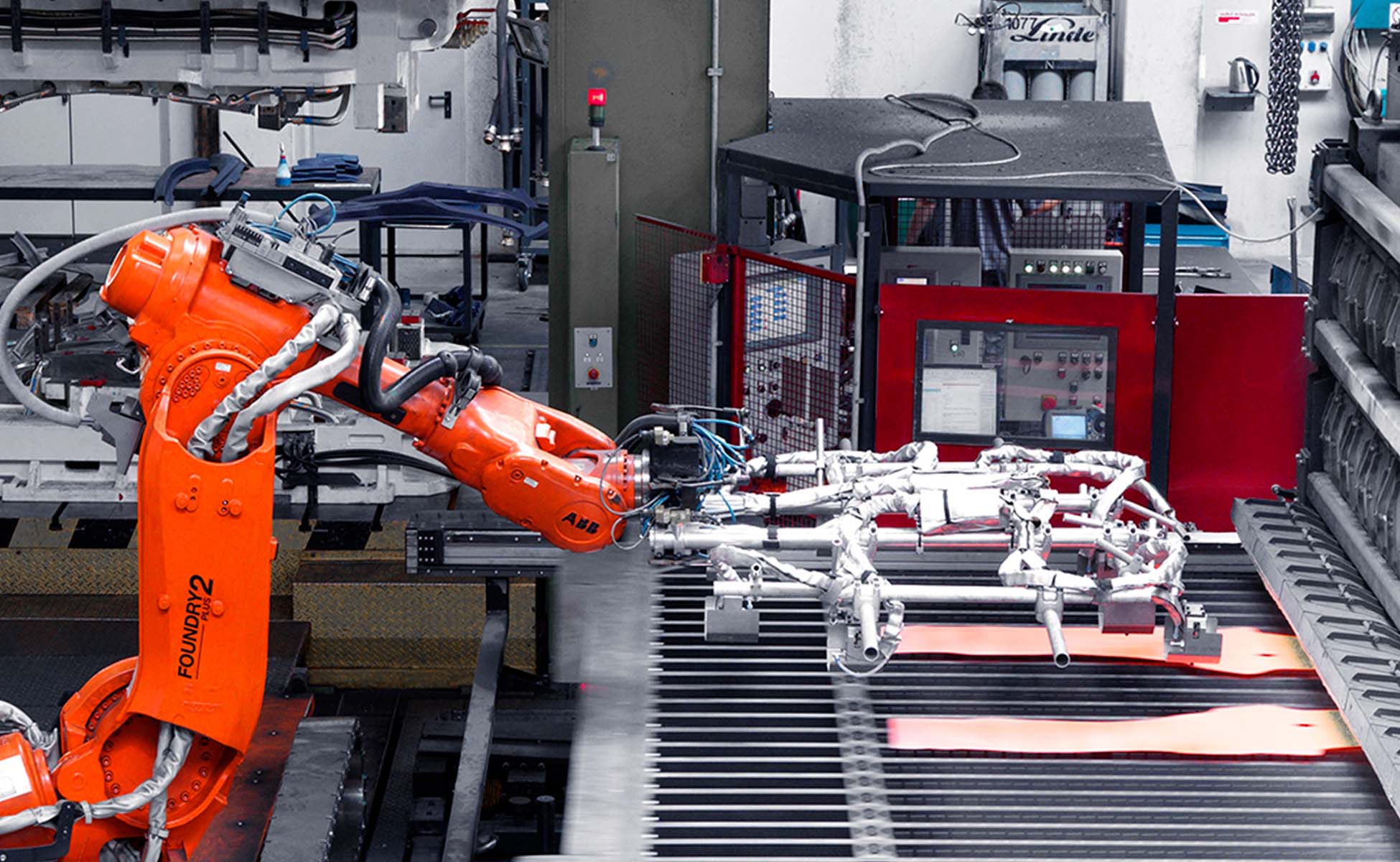Contents: Basics and Applications of Hot Forming
- What exactly is hot forming?
- How does the hot forming process proceed?
- What advantages does hot forming offer?
- In which areas is hot forming most commonly used?
What exactly is hot forming?
Hot forming is a process in metalworking or sheet metal forming, where metal is formed at elevated temperatures with the aim of increasing hardness. The material is formed above its recrystallization temperature and then rapidly quenched or cooled. The recrystallization temperature is typically between 40 and 60 percent of the material's melting temperature and can vary depending on the material's alloy. In hot forming, we talk about the austenitization temperature. This is the temperature at which steel forms austenite when heat is applied. For steel, approximately 900 °C is necessary to fully recrystallize the sheet. The increase in temperature changes the structure of the material, leading to a decrease in hardness and significantly better formability of the metal with less force required.
How does the hot forming process proceed?
In hot forming, a steel sheet blank is first heated to a temperature above its austenitization temperature (about 900 °C), as mentioned above. This temperature is above the critical temperature at which the metal changes its crystalline structure. By raising the temperature, the metal becomes softer and easier to form. Subsequently, the heated blank is transferred to the forming tool within a few seconds and rapidly cooled during forming and hardening to ensure sufficient quenching.
What advantages does hot forming offer?
Hot forming offers a number of advantages. Due to the increased formability of the metal, complex shapes and tight tolerances can be achieved while maintaining the highest strength. Furthermore, the use of elevated temperatures can reduce material stresses and deformation forces. This contributes to the improvement of component quality and wear resistance, and reduces the likelihood of cracks or other defects in the material.
In which areas is hot forming most commonly used?
The application of hot forming is found in various industries. Especially in automotive manufacturing, aerospace, mechanical engineering, and heavy industry, hot forming is frequently used. In the automotive industry, safety-relevant and structural body components are often hot-formed, such as A-pillars, B-pillars, bumpers, longitudinal members, etc.
